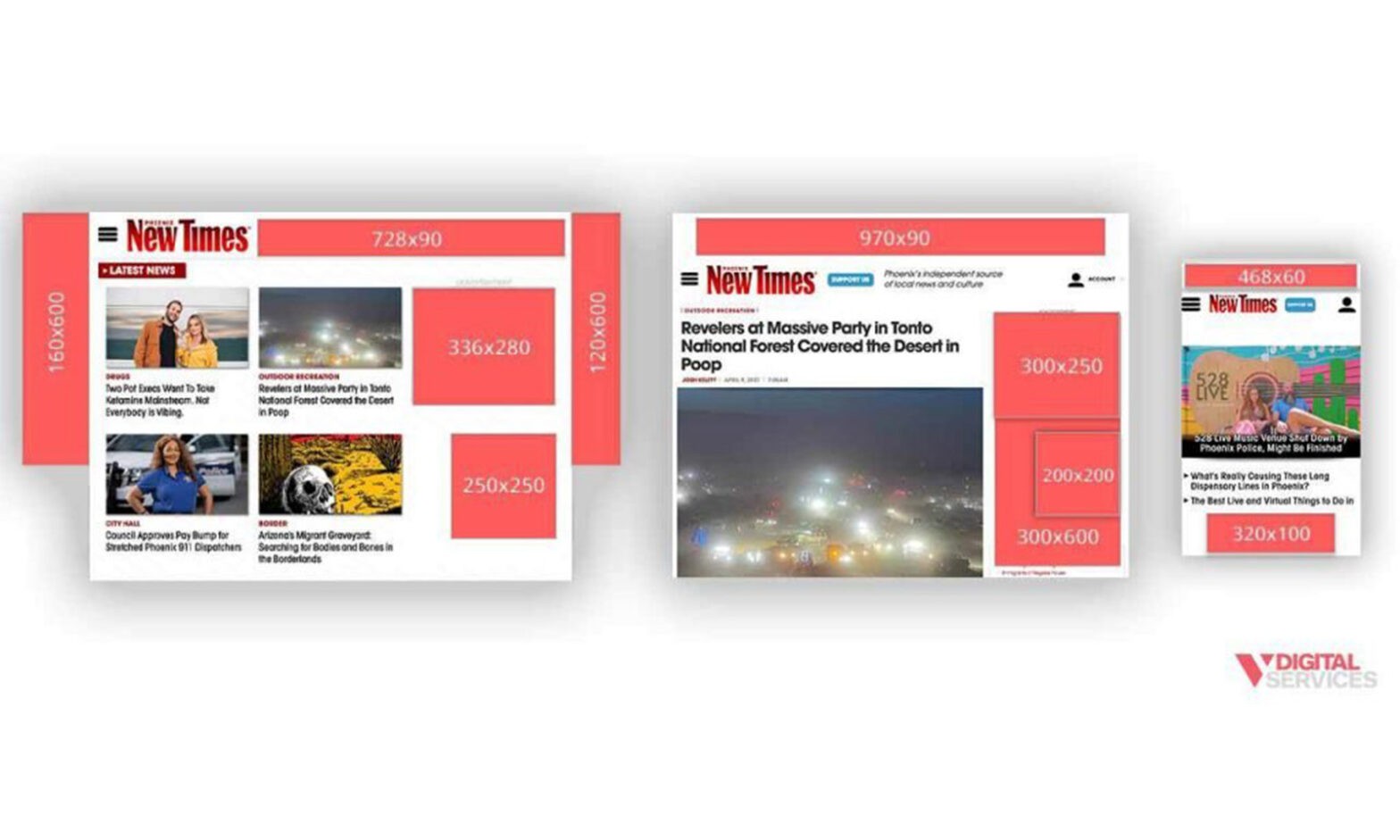Google Ads is a key element in many digital marketing strategies, offering a broad range of options for customized banner ads to suit many different purposes.
You probably already know that Google Ads can be an excellent way to reach your target audience and check off some big marketing goals. But what about choosing the best ad sizes? As it turns out, there are specific display ad sizes that perform better than others, making it an important factor to keep in mind.
We’re taking a look at the 10 Google Ads banner sizes you need to know right now, plus giving you a few bonus tips for creating Google Ads that get the job done.
Most Common Google Ads Banner Sizes
The top 10 sizes for banner ads on Google make up a pretty straightforward list:
- 250 pixels x 250 pixels – Square
- 200 pixels x 200 pixels – Small Square
- 468 pixels x 60 pixels – Banner
- 728 pixels x 90 pixels – Leaderboard
- 300 pixels x 250 pixels – Medium Rectangle
- 336 pixels x 280 pixels – Large Rectangle
- 120 pixels x 600 pixels – Skyscraper
- 160 pixels x 600 pixels – Wide Skyscraper
- 300 pixels x 600 pixels – Half-Page Ad
- 970 pixels x 90 pixels – Large Leaderboard
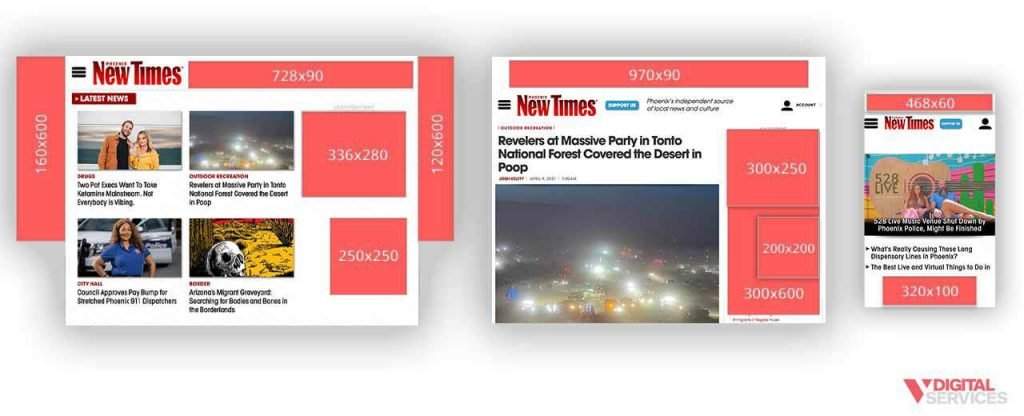
Understanding Google Ad Sizing
There are some other size options for AdSense publishers in specific regions of the world, primarily countries outside of North America. Also, there are mobile-only ad sizes (such as 320 pixels x 50 pixels and 320 pixels x 100 pixels) that function on certain mobile devices but not desktops or tablets.
You certainly won’t be lacking variety in terms of size options; that much can be said. And while it’s great to have choices, it can also make it challenging to know where to start. But if you’re hoping to prioritize performance (and we’re guessing that you are), there are a handful of ad sizes you’ll want to consider first.
Google’s Top-Performing Banner Ad Sizes
There is an ample amount of information about Google’s display ads, including a list of the top-performing banner ad sizes provided by Google itself.
These five ad sizes are the best in terms of performance:
1. Medium Rectangle
Ad Display Sizing: 300 pixels x 250 pixels
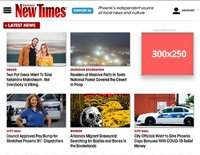
2. Large Rectangle
Ad Display Sizing: 336 pixels x 280 pixels
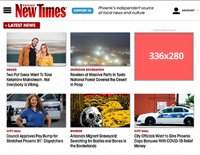
3. Leaderboard
Ad Display Sizing: 728 pixels x 90 pixels
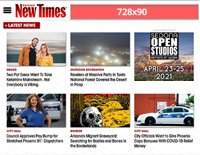
4. Half-Page Ad
Ad Display Size: 300 pixels x 600 pixels
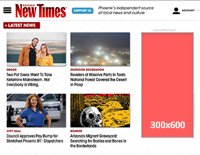
5. Large Mobile Banner
Ad Display Size: 320 pixels x 100 pixels
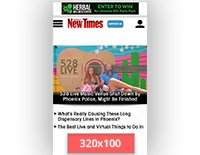
Out of these five ad size options, only two are compatible with mobile text and display ads. Most of them offer the benefit of more ad inventory from advertisers, which can work in your favor by boosting earnings when you enable both text and image ads. Some perform better when embedded at the end of articles or within text-based content, while others excel on forum sites.
These details and others are readily available directly from Google, which can make it much easier to decide how and where to use each type of banner ad.
How to Create Effective Google Display Ads
Now that you know more about the top banner ad sizes, it’s time to dig into the process of actually creating an ad. We’ve assembled our four must-have tips for building display ads for a successful campaign, giving you a foolproof guide to getting started with Google Ads – so let’s jump right in.
1. Understand why display advertising is valuable to your strategy.
You might be wondering: are display ads worth the cost? It might be tempting to cut corners – and costs – by skipping display advertising altogether, but that would be leaving a major gap in your digital strategy.
Display ads differ considerably from search ads because they give you the opportunity to curate the fonts, colors, and images that represent your brand, as well as text-based content to communicate a clear message. While they average a lower direct click-through rate than search advertising, they still serve a valuable purpose.
With display advertising, you can remarket to past users while concurrently building brand awareness. Together, these can help propel users down your sales funnel and make conversions more likely in the future.
2. Familiarize yourself with the rules and restrictions for display ads.
Generally, you have a fair amount of flexibility when creating your display advertisements. However, each platform has a few basic rules that you’ll want to be aware of. Otherwise, the time, energy, and money you invested in designing your ads will all be wasted when your selected site rejects them.
For example, all Google Ads must have a file size of less than 150KB. Other Google Ads rules include a ban on ads with a white background and no border outline. On Facebook, display ad images are limited to a maximum of 20% text, including any logos.
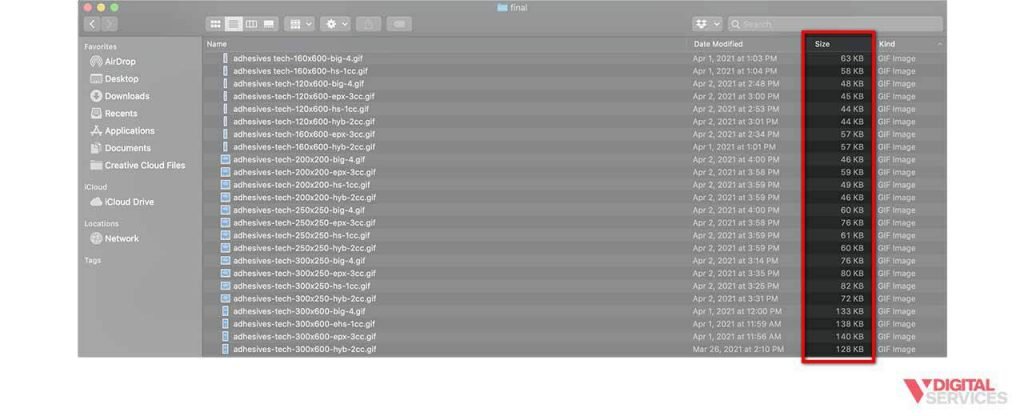
3. Design ads that are optimized for both performance and user engagement.
You might think that ad design is easy – but once you’re actually trying to tackle DIY design on your own, it becomes clear that it’s harder than it looks. For this reason (and others), working with a professional is usually the best course of action. Not only can a professional create an aesthetically pleasing, brand-authentic advertisement that effectively connects with your target customers, but they also can likely do it far more efficiently than you.
However, if you’re determined to try designing your own display ads, here are a few of the things you’ll need to consider:
- Color: Aim for a color scheme that captures users’ attention but doesn’t end up being an eyesore. Ideally, your display ad colors should make sense with your branding to avoid confusing users.
- Images and graphics: One of the biggest advantages of display ads vs. search and text ads is the ability to incorporate a visual aspect. So, choose your images and graphics wisely. Look for imagery that conveys a specific message or emotion while communicating a key idea that aligns with ad text.
- Content and ad layout: When in doubt, keep it simple. This is a good rule of thumb for advertising in general, especially when you’re generating content and crafting layouts for display advertising.
- Call to action: Ask yourself what exactly you want internet users to do when they see your ad – what action will they take that fulfills your goal? This is your call to action (CTA) and is one of the most important parts of your banner ad. Make it clear, concise, and easy to spot so that a viewer knows exactly what their next step will be.
Maximize Your Ad Performance with V Digital Services
When it comes to ad sizes for Google Ads, you’ve learned that size matters – but so does quality, strategy, and design. Banner ads can be a smart investment for your business, especially if you’re partnering with an experienced marketing team to help you navigate the process strategically.
V Digital Services is a full-service digital marketing agency with extensive experience in a variety of mediums and platforms. We’ve helped countless clients develop marketing strategies tailored for their goals and needs, including launching Google Ads campaigns targeting their ideal audiences. Our team is prepared to help you get the maximum return on investment for paid advertising, supporting your short- and long-term business goals alike.
Learn more about how the right banner ad sizes can make all the difference when you reach out to V Digital Services today.
Image Credit: Wavebreakmedia/Shutterstock

